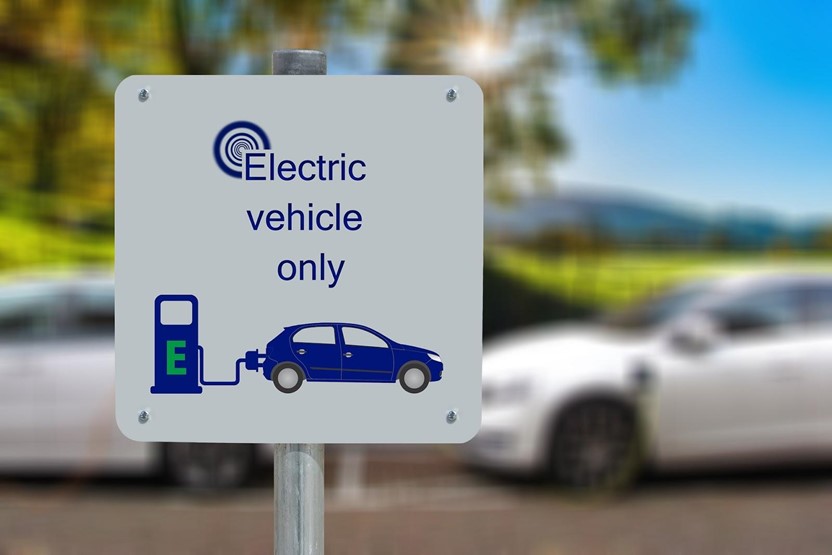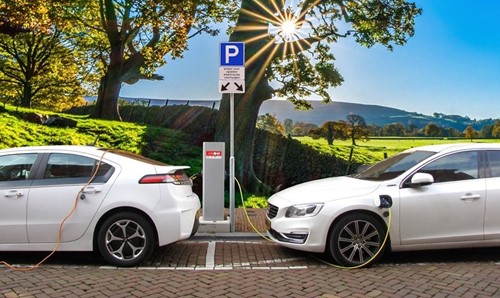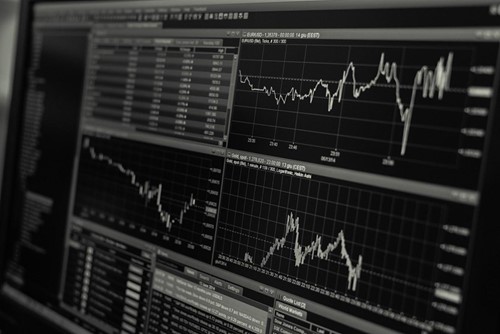How to Invest in NIO
Posted:
Introduction
The buzz around electric vehicles in the past several years has excited investors about the industry. Nio, a Chinese electric vehicle designer, manufacturer, and seller, is no exception.
The company's share price movement has had its ups and downs however some market commentators indicate that the company’s fundamentals have remained the same and that the recent share price volatility has resulted from other market forces, particularly the performance of the U.S. 10-year Treasury Bond i.e. rising interest rates.
We’ll examine Nio in depth covering its performance, its stock history, and the best ways to invest in Nio going forward.
About Nio
Founded in Shanghai, China in 2014, Nio is a relatively young company with a mission focused on creating intelligent, electric, autonomous motor vehicles. It went public in September 2018.
In the past seven years, it has adopted a fairly aggressive approach to its introduction to the world market and doesn’t show any sign of holding back. It has established locations in Shanghai, Hefei, and Beijing in China. Worldwide, it has facilities in San Jose, California, Munich, Germany, and Oxford, England.
The company currently produces five models in a range of styles:
- The ET7 is an electric sedan.
- The EC6 is a crossover-type vehicle.
- The ES8 and ES6 complete their sports utility vehicle offering.
- Finally, they have devised a high-speed electric sports car in the EP9.
In addition to these models, it is currently working on EVE, which they tout as the future of autonomous vehicles.
Company History
Founded by Bitauto and NextEV chairman William Li, the company was able to attract investment, shortly after launch, from some famous private equity firms. The more notable investors included:
- TPG
- Lenovo
- Sequoia
- Baidu
- Temasek
- Tencent
With this vote of initial confidence, the company rapidly moved forward. The company launched its new brand name, NIO, and EP9 sports car on the same day (The company was formerly known as NextEV) . As one of the fastest electric sports cars on the market, it was quite an introduction.
The company’s next big turning point came in 2016 when it was issued an autonomous vehicle testing permit in California. They planned to test vehicles with level 3 and level 4 autonomy.
Autonomous cars operating at level 3 have environmental detection capabilities and can make decisions without human intervention. However, they require human attention to override their decisions if they cannot safely execute a maneuver.
Level 4 autonomy denotes the ability of the vehicle to intervene when things do not go as planned. They are capable of self-driving operation but can be overridden by human intervention.
In 2018, the company reached two significant milestones:
- The establishment of a power swap station
- The 1.8 billion-dollar initial public offering on the New York Stock Exchange
Also, in 2018, they issued the ES8. And 2019 saw the release of the ES6 sports utility vehicle.
In 2020, three new advancements occurred:
- The acquisition of an additional one billion dollars of funding.
- They established Battery as a Service.
- They released the EC6.
Company Outlook
As Tesla proceeds with manufacturing in China, the fight for electric vehicle supremacy is a well-stoked fire. The Chinese electric vehicle brands Nio, Li Auto, and Xpeng all plan to expand operations in the coming years.
Nio’s stated goals include production levels of 10,000 units per month by the end of this year and 150,000 units per year in early 2022. These are ambitious targets given a current limitation based on the chip shortage. They are only able to produce 7,500 units per month.
An anticipated 30% growth in electric vehicle sales in China in 2021 suggests a positive outlook for electric vehicle producers. And globally, the growth is projected to be closer to 70%.
A couple of innovations are key considerations for the company’s growth:
- They’re poised to release the world’s first electric vehicle with a solid-state battery and a 600-mile range.
- Their battery-swapping business model. Customers can choose to purchase the vehicles separately from the batteries and then rent the batteries for a fee.

Nio Stock Considerations
Nio has positioned itself as a competitor in a high-tech, rapidly growing market. Electric vehicles have garnered a great deal of consumer attention worldwide, driven largely by Tesla’s early success. Nio seeks to dive into the market as an aggressive proponent of advanced electric vehicle and autonomous vehicle technology.
A glance at the company’s numbers suggests a positive trend, despite the recent stock dump. At the end of 2020, they reported record numbers for deliveries annually, quarterly, and monthly.
Their total deliveries for 2020 were 43,728, with 7,007 of those in December of that year, denoting a year-on-year growth of 121%. Measured yearly, it’s a 113% growth rate year on year. This includes a 111% year-on-year growth rate over a quarter, based on an increase of 17,353 vehicles.
The new sedan model, the Nio ET7, suggests a new avenue for growth for the company, including the announcement of several new technologies. They also have three other upcoming models in the pipeline, including a minivan.
Another advantage is their location in China. The government has recently been making moves in support of electric smart cars.
At the top of the list of disadvantages is the competition. While Nio exists in a relatively large market, it also faces a large number of other contenders. There are currently 400 new energy vehicle manufacturers in China. This huge field boasts several very well-regarded electric auto manufacturers, including:
- Tesla
- Li Auto
- Geely Automotive
- Xpeng
Sharing the stage with these competitors may reduce the company’s level of success in a highly competitive, innovation-focused industry.
Another possible downfall is their focus on automation. While automation is cutting-edge technology and may even be the wave of the future, it doesn’t yet appear to be a feature subject to widespread adoption among the global public. The company’s split focus between new energy and automation could result in diluted interest from consumers.
The company is not currently profitable. Their third-quarter earnings (of what year?) were -$.14 per share.
Another consideration is the turbulent economic relationship between the United States and China. With Chinese telecom stocks recently being delisted at the federal government's urging, purchasing stock in Chinese companies may be an extra risky proposition.
Nio Stock History
In August 2020, 88.5 million American Depositary Receipts were issued at 17 dollars each, denoting a fairly rapid increase from a low the previous year of $2.11 per share. On December 17, 2020, they released an additional 68 million American Depositary Receipts at 38 dollars per share.
As of January 6, (2021?) the stock was trading at $53.50 per share. The stock price's total range is between $2.11 and $57.20, which is a huge spread.
Despite that fact, it performed well during the pandemic along with other electric car companies such as Tesla. As of March 2021, Nio trades at $41.34.
Is Nio Stock for You?
Nio may be appropriate for a risk-tolerant investor with interest in environmentally-friendly, high-tech automotive solutions.
Like any investment, the best way to determine whether a purchase of Nio stock is appropriate for your portfolio is to consult with your financial advisor to ensure that it contributes to an appropriately diversified, intelligent, and tactically proficient investment strategy.
How to invest in NIO?
The first decision you need to make is how much you’re prepared to invest. This consideration should not be taken lightly and involves a close look at your overall financial picture. A financial planner can help you to find an appropriate number to invest.
Once you’ve decided how much you’d like to invest, you need to choose an avenue for that investment.
The most common way to invest in NIO is by purchasing the company’s stock, or in the case of NIO, technically the NIO American Depository Receipt listed on the New York Stock Exchange (NYSE). This is the most direct way to purchase it however some brokers in Europe may not allow investors to purchase ADRs or to hold ADRs in tax advantaged accounts such as UK ISAs.
Another way to gain exposure to NIO is to invest in NIO 3X short and leveraged daily ETPs offered by investment firm Graniteshares. Graniteshares ETPs offer both 3x long or 3x short exposure to the daily price movements in NIO. Graniteshares ETPs are listed on the London Stock Exchange and are available to be bought and sold throughout UK market hours.
Choosing a Broker
Choosing financial professionals with which to work is one of the most important decisions you can make in your life. After all, you trust them with your savings, discretionary money, and ultimately your financial future.
That means that the decision of which broker you decide to employ can and should take some time. You should think through a range of important factors involved in this particular business relationship.
One of the most basic elements is the cost. What fees does the broker charge? There can be fees associated with buying, selling, and holding a stock with a brokerage. They may also include margin interest and commissions.
With the emergence of commission free trading, a popular strategy among investors is to go to the broker with the lowest overall fees. Investors should be aware that there may be hidden costs so it is always prudent to understand the complete picture when it comes to brokerage fees.
Another important factor is deposit minimums. Some brokerages have a minimum amount you need to maintain in your account for them to do business with you. This might be an option if you can readily meet the minimums, and they meet your needs in every other way.

DISCLAIMER
This is a disclaimer stating that all trading and investing comes with risks. Always do your research and do not invest more than you can afford to spend.
GraniteShares accepts no responsibility for any loss or damage resulting directly or indirectly from the use of this blog or the contents. GraniteShares Limited (“GraniteShares”) (FRN: 798443) is an appointed representative of Messels Limited which is authorised and regulated by the Financial Conduct Authority.
This blog does not constitute an offer to buy or sell or a solicitation of an offer to buy securities in any company. Nothing contained herein constitutes investment, legal, tax or other advice nor is to be relied upon in making an investment or other decision. No recommendation is made positive or otherwise, regarding individual securities or investments mentioned herein. Any summary list of risk factors does not purport to be a complete enumeration or explanation of the risks involved in a particular investment. Prospective clients must consult with their own legal, tax and financial advisers before deciding to invest. This email contains the opinions of the author and such opinions are subject to change without notice. The source of data is GraniteShares unless otherwise stated. No guarantee is made to the accuracy of the information provided which has been obtained from sources believed to be reliable. This email and the information contained herein is intended only for the use of persons (or entities they represent) to whom it has been provided. Past performance is not a reliable indicator of future results. The value of an investment may go down as well as up and can result in losses, up to and including a total loss of the amount initially invested. Investments may involve numerous risks including, among others, company risks, general market risks, credit risks, foreign exchange risks, interest rate risks, geopolitical risks and liquidity risks. Please note that GraniteShares short and leveraged Exchange Traded Products are for sophisticated investors.


